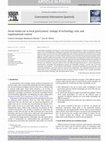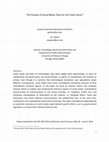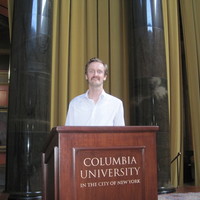Papers by Gustavo Henrique Maultasch de Oliveira

SSRN Electronic Journal, 2014
Even though developed to explain institutional dysfunction in Congress, the concept of institutio... more Even though developed to explain institutional dysfunction in Congress, the concept of institutional corruption has been applied to different types of organizations and industries. This application has generated insights about the problems affecting different sectors, but it has also raised questions about the accuracy of using the concept in other, non-Congress, contexts. This paper argues that the concept of institutional corruption has broad applicability, but it needs some conceptual adaptation when used in contexts different from the original one. By analyzing the institutional corruption features with this adaptation in mind, this paper proposes a more general framework for the theory that is broadly applicable to different settings while retaining its internal coherence. To do so, this paper approaches institutional corruption from the lens of organizational design. In this perspective, institutional corruption will be described as a type of failure in achieving the institutional purpose that happens because of the institutional design, rather than because of unsatisfactory performance. This paper explains the institutional mechanisms that cause this failure, and concludes with some theoretical implications of the framework proposed.
Even though social media technologies have been increasingly adopted in the workplace, few studie... more Even though social media technologies have been increasingly adopted in the workplace, few studies have looked at the consequences and contradictory outcomes of this adoption. This exploratory case study seeks to understand how organizations are using social media and what the consequences of this adoption are, from the perspective of managers and users. Ten in-depth, semi-structured interviews were conducted with managers and social media users of a large professional association in the US (Pro-Org, a pseudonym). Preliminary findings suggest that adoption of social media is not a controlled process, and contradictory expectations among management and coping strategies from users may undermine organizational capacity to achieve its outcomes regarding social media.

Social media technologies have begun to enter the governmental workplace as tools to accomplish i... more Social media technologies have begun to enter the governmental workplace as tools to accomplish improved public service and engagement. Widespread recognition of the potential of social media technology for achieving public outcomes does not match our understanding about how and why specific tools are being used for specific purposes. This paper makes use of newly collected national survey data from local government managers in five different agencies to address the questions: which social media tools are being used, for which tasks or purposes; and what organizational characteristics influence the coupling of task and technology. Findings reveal patterns of social media tool application for particular purposes, although organizations do not all use social media tools in the same way. Moreover, regression analysis shows that different organizational factors – work characteristics, innovativeness, technology and management capacity and stakeholder influence – predict each of the four technology–task couplings — social media for dissemination, social media for feedback on service quality, social media for participation, and social media for internal work collaboration. This study demonstrates that social media tools are not a monolithic group and calls for greater research attention to the complex interactions among social media technology, task and organizational context.

Social media and Web 2.0 technologies have been judged both optimistically, as tools for collabor... more Social media and Web 2.0 technologies have been judged both optimistically, as tools for collaboration and governance, and pessimistically, as agents of manipulation and invasion of privacy. Even though it is common that technological innovations spur speculations about different consequences, social media tools invite contradictory evaluations because of their contradictory technical aspects. In this paper we draw on medium theory and computer network theory to explain two fundamental technical aspects of social media: centralization (concentration of communication in one service provider, i.e. Facebook, Twitter etc.) and activeness (manipulation of information by the medium, i.e. Facebook filters). These two dimensions may foster effective communication and collaboration but, at the same time, contribute to user manipulation and invasion of privacy. The paper concludes by explaining how an optimistic realization of social media might demand specific efforts, such as governmental regulation, to contain their inherent technical risks.

Even though developed to explain institutional dysfunction in Congress, the concept of institutio... more Even though developed to explain institutional dysfunction in Congress, the concept of institutional corruption has been applied to different types of organizations and industries. This application has generated insights about the problems affecting different sectors, but it has also raised questions about the accuracy of using the concept in other, non-Congress, contexts. This paper argues that the concept of institutional corruption has broad applicability, but it needs some conceptual adaptation when used in contexts different from the original one. By analyzing the institutional corruption features with this adaptation in mind, this paper proposes a more general framework for the theory that is broadly applicable to different settings while retaining its internal coherence. To do so, this paper approaches institutional corruption from the lens of organizational design. In this perspective, institutional corruption will be described as a type of failure in achieving the institutional purpose that happens because of the institutional design, rather than because of unsatisfactory performance. This paper explains the institutional mechanisms that cause this failure, and concludes with some theoretical implications of the framework proposed.











Uploads
Papers by Gustavo Henrique Maultasch de Oliveira